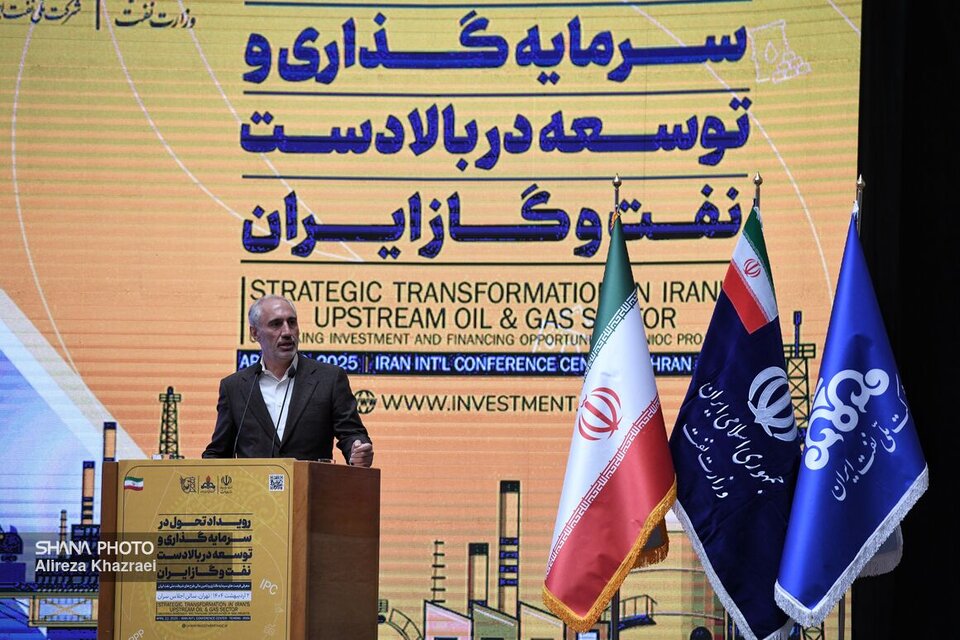Hamid Pourmohammadi, speaking Tuesday at the opening of the national event "Transformation in Investment and Development of Iran’s Upstream Oil and Gas Industry," said engaging with oil industry experts was an honor.
“Without exaggeration, oil is the backbone of Iran’s development, and we owe our progress to those serving this vital sector—whether on offshore platforms or in onshore offices and private companies,” he said.
Citing Iran’s geopolitical position and transport infrastructure, Pourmohammadi emphasized the country’s 5,800 kilometers of maritime borders and its location along north-south and east-west corridors, giving it a strategic edge in maritime trade and energy transit. He also noted diversified ports and expanding rail infrastructure as key enablers for oil and other sector investments.
Oil in Iran’s historical and civilizational fabric
Pourmohammadi pointed to Iran’s skilled workforce, stating that the country has long been a pioneer in engineering education. “Iranian professionals, both domestic and abroad, are invaluable assets for oil and gas development,” he said. Iran ranks fifth in natural resources, fourth in mining, and first in shared oil and gas reserves globally. However, he stressed that oil’s significance goes beyond proven reserves, deeply rooted in Iran’s history and civilization.
Tracing oil’s historical legacy—from Masjed Soleyman and Zakariya Razi to ancient eras—he noted that the word "naft" (oil) originates from Avestan, underscoring Iran’s pioneering role. He urged the younger generation to draw inspiration from this heritage to restore Iran’s rightful standing.
Addressing past investment challenges
Pourmohammadi acknowledged past hurdles, including complex procedures, lengthy timelines, and lower returns compared to regional peers. “Previous contracts offered just 14–15% returns, while bureaucratic overlaps confused investors,” he said. However, reforms are now underway via collaboration between the Plan and Budget Organization and the Oil Ministry.
New tax incentives, financial measures
Referencing a recent Economic Council approval, Pourmohammadi announced that—in line with the "Year of Production-Focused Investment"—project return rates have risen to 20–23% to attract investors. Additionally, the National Development Fund’s loan rates for project financing now include a 2% markup in cost calculations.
A key reform allows investors to share in excess profits from improved technology or faster project execution. The National Iranian Oil Company (NIOC) may allocate a portion of surplus earnings beyond contract terms to investors. Meanwhile, the Audit Organization will establish transparency standards for future revenues, enabling investors to leverage financial tools.
Tax incentives under Article 20 of the Seventh Development Plan will also apply, particularly in underprivileged regions, to boost investment appeal. The government aims to streamline exemption approvals for direct implementation.
Streamlining oil investment processes
Criticizing prolonged contract finalization—some taking up to 3.5 years—Pourmohammadi said the NIOC must now complete negotiations within four months (two for conceptual talks, two for technical review).
Administrative reforms will expedite oil project approvals. In some cases, tender formalities may be waived, with the Plan and Budget Organization committing to a one-month timeline for Economic Council approvals post-document submission. Expert reviews must proceed swiftly unless ambiguities arise, which will follow defined exceptions.
Clarifying domestic manufacturing rules
To accelerate projects, feasibility studies and waiver requests will now be submitted simultaneously, with both processes finalized within a month. Pourmohammadi stressed inter-agency coordination, requiring entities like the Environmental Protection Organization and Customs to issue decisions within four weeks.
He also addressed challenges in assessing local equipment production, directing the Ministry of Industry to establish clear approval/rejection mechanisms for predictability.
Broader investment opportunities beyond oil
Pourmohammadi called these measures a first step, with over $130 billion in oil projects underway. However, Iran seeks investments in mining, environment, transport, ports, and even new city development.
“Iran needs new airports, aviation fleets, urban transit, high-speed rail, ports, and wetland restoration,” he said, inviting foreign and domestic firms to collaborate. Companies investing in oil and gas may reinvest profits in infrastructure, creating mutual benefits.


Your Comment